Table of Contents
ToggleIn a world where data reigns supreme, the quest for perfect data annotation tools can feel like searching for a needle in a haystack. With countless options out there, how’s one supposed to pick the right tech without losing their sanity? Fear not! This guide dives into the nitty-gritty of data annotation tech reviews, helping you separate the gems from the duds.
Overview of Data Annotation Technology
Data annotation technology serves as a crucial backbone for machine learning and artificial intelligence. These tools facilitate the labeling of data, ensuring accurate training for models. Numerous types of annotation methods exist, including image, text, and video annotation. Each method caters to specific datasets and project requirements, enhancing data usability.
Image annotation tools categorize objects within images, providing bounding boxes and segmentation labels. Text annotation typically involves entity recognition and sentiment analysis, which adds context to text data. Video annotation combines both to track actions or objects over time, enabling more complex datasets.
Integrating automation into annotation processes improves speed and reduces manual labor. Automated tools utilize algorithms to expedite data labeling, though results vary by technology and application. Some platforms focus on human-in-the-loop systems, combining both human accuracy with machine efficiency.
Evaluating data annotation technologies requires examining factors such as scalability, cost, and user-friendliness. Platforms like Amazon SageMaker, Labelbox, and Supervisely offer diverse functionalities tailored to different project scopes. This range makes it essential for organizations to assess their specific needs before choosing a tool.
Prioritizing quality over quantity remains vital. Output accuracy directly affects model performance, impacting overall project success. It’s crucial to stay informed about emerging technologies. Continuous advancements in data annotation promise further enhancements, making this field one of rapid evolution.
Types of Data Annotation Tools

Understanding the various data annotation tools available helps in choosing the right technology for specific needs. Each tool type specializes in a particular dataset, ensuring optimal outcomes.
Image Annotation Tools
Image annotation tools focus on labeling visual content. These tools support tasks like object detection, image segmentation, and classification. Labelbox and Supervisely stand out as popular options, offering features that enhance user experience and annotation precision. Many platforms integrate machine learning capabilities to automate parts of the annotation process, increasing overall efficiency. Quality remains a critical factor; tools that deliver accurate annotations directly influence the performance of AI models.
Text Annotation Tools
Text annotation tools emphasize the labeling of textual data. They assist in tasks such as entity recognition, sentiment analysis, and text classification. Platforms such as Prodigy and SpaCy are frequently utilized for their user-friendly interfaces and robust functionalities. Automation plays a pivotal role in streamlining workflows, enabling faster data processing. Accurate text annotations ensure models better understand context and meaning, which is vital for natural language processing applications.
Video Annotation Tools
Video annotation tools are essential for labeling and classifying video content. They enable tasks like object tracking, action recognition, and frame classification. Tools such as VGG Image Annotator and CVAT provide features that ease the annotation workflow and improve efficiency. Integrating automation into video annotation significantly reduces manual effort, accelerating curation processes. High-quality video annotations enhance model training, making accuracy crucial for effective machine learning outcomes.
Key Features to Consider in Data Annotation Tech
Selecting the right data annotation tools involves evaluating several critical features. Understanding usability, scalability, and integration capabilities ensures the chosen technology aligns with project goals.
Usability and User Interface
Usability directly impacts team efficiency. An intuitive user interface simplifies navigation and enhances user experience. Tools that support easy onboarding reduce the learning curve for new users. Clear visuals and organized workflows empower teams to annotate data swiftly and accurately. Providing features like drag-and-drop functionality also streamlines the labeling process. Ease of use increases the likelihood of consistent, high-quality annotations.
Scalability and Performance
Scalability is essential for managing growing datasets. High-performing tools adapt seamlessly to increasing volumes without compromising speed or accuracy. Platforms that support parallel processing enable teams to annotate multiple data types simultaneously. Fast processing times enhance productivity, allowing for quicker project turnarounds. Organizations should prioritize solutions that can expand alongside their data needs, ensuring sustained effectiveness as projects evolve.
Integration Capabilities
Integration capabilities facilitate collaboration across platforms. Data annotation tools that easily connect with existing machine learning frameworks offer smooth workflows. Ensuring compatibility with various file formats streamlines the data preparation process. Tools should allow for straightforward API integrations, enhancing flexibility and efficiency. Organizations benefit from solutions that enable data sharing and workflow management across diverse ecosystems, enhancing collaboration and project success.
Leading Data Annotation Tool Reviews
Several data annotation tools stand out in the ever-evolving landscape. These tools offer unique features tailored for different annotation needs.
Tool A Review
Labelbox provides a robust platform for image and video annotation. Users benefit from its intuitive interface, which enables seamless navigation. Machine learning capabilities enhance efficiency for teams working on large datasets. Furthermore, integration with popular machine learning frameworks streamlines workflow. Competitive pricing makes it an attractive choice for both startups and established enterprises.
Tool B Review
Prodigy excels in text annotation, offering a smart solution for natural language processing tasks. It supports rapid iteration, enabling teams to refine data sets quickly. Features like active learning boost productivity by suggesting annotations based on previous entries. Prodigy’s flexible customization options cater to specific project requirements. As a result, teams appreciate its ability to adapt and grow with user needs.
Tool C Review
Supervisely caters to the demands of computer vision projects with its image and video annotation tools. A strong emphasis on collaboration enhances team productivity, allowing multiple users to work simultaneously. Real-time feedback improves annotation quality by facilitating immediate updates. Its comprehensive integrations with various data pipelines simplify task management. Users often praise its scalability, ensuring effective handling of increasing project sizes.
Navigating the world of data annotation technologies can be daunting but understanding the key features and capabilities of each tool can significantly ease the process. Prioritizing quality over quantity ensures that projects yield accurate results essential for machine learning success.
As the landscape of data annotation continues to evolve, staying updated on emerging technologies will empower users to make informed decisions. By selecting the right tools tailored to specific needs, teams can enhance efficiency and achieve better outcomes in their data-driven projects. Embracing automation and integration further streamlines workflows, allowing for seamless collaboration and scalability.




